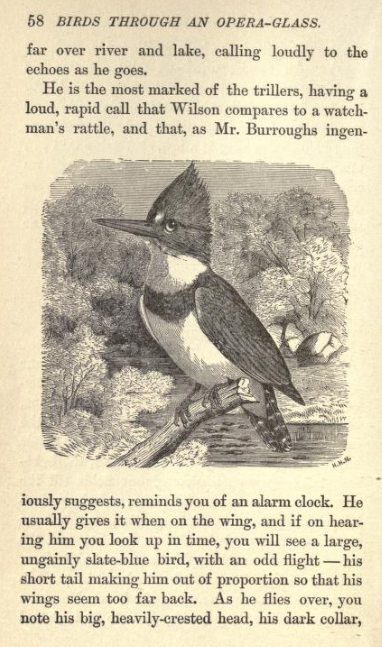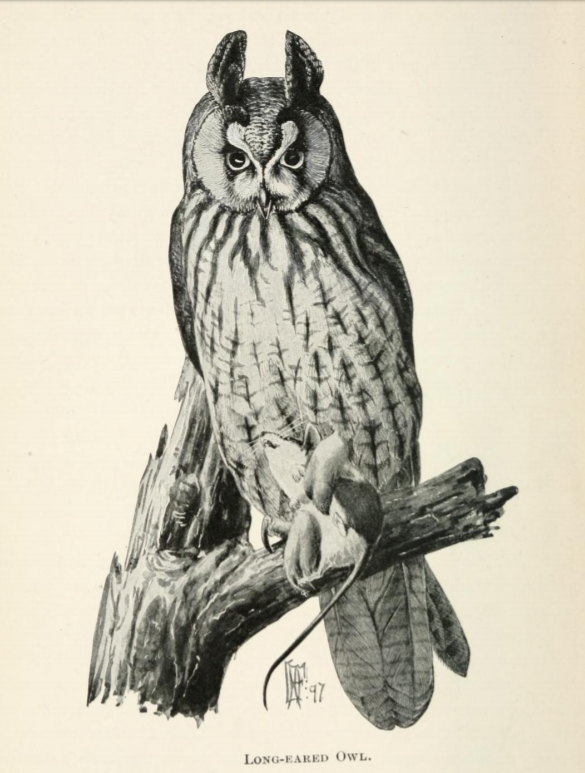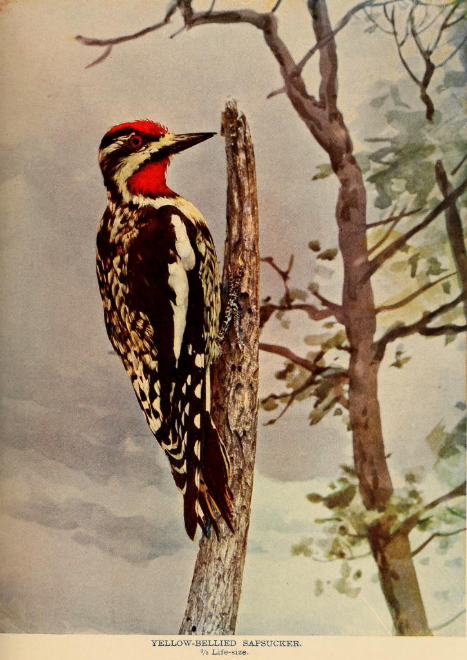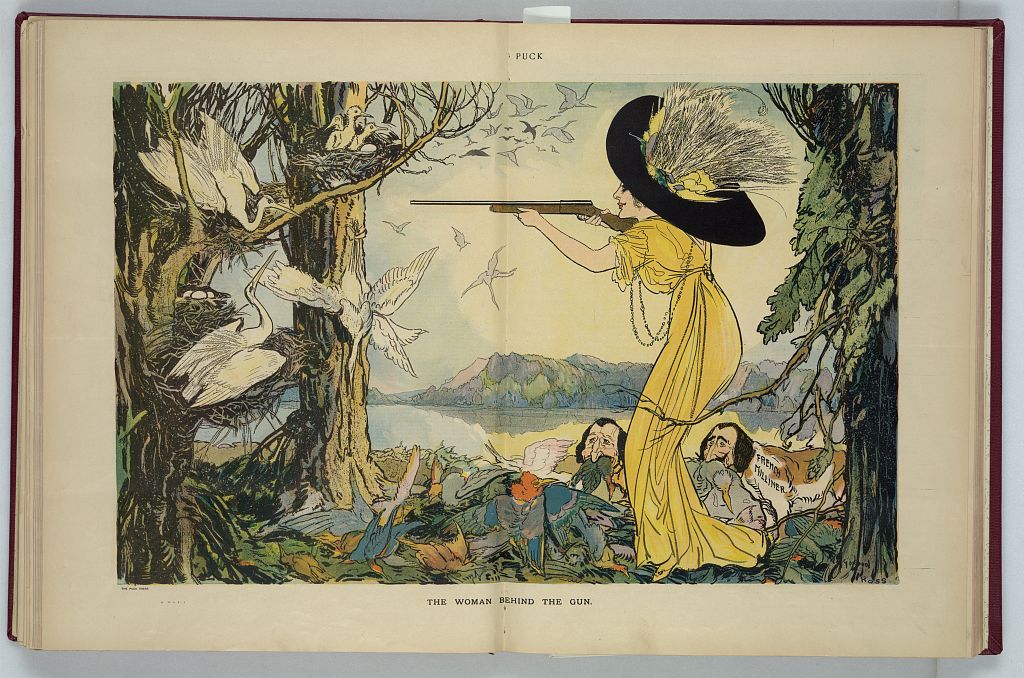by Allison C. Meier
In the late 19th century, an egret’s head plume was worth more than gold. Feathers were the height of American women’s fashion, adorning fans and dresses, with whole taxidermy specimens topping hats. Frank Chapman, ornithologist at the American Museum of Natural History in New York, famously took an 1886 "Feathered Hat Census" on the streets of Manhattan, and identified that three-quarters of observed women's hats incorporated parts of a variety of birds.
It’s estimated that at the turn of the century, five million birds a year were killed for fashion in the United States. Stopping this slaughter would necessitate not just a shift in fashion trends, but a better public appreciation for birds. The passage of the Migratory Bird Treaty Act of 1918 — a law whose power is now being eroded by the Trump administration — was pivotal in stopping the hunting of birds for their feathers in the United States, and grew out of a grassroots conservation movement. Although limited by societal expectations and restrictions on education and careers, several Victorian women led this movement, using the resources they had. One of these was their own backyards. Excluded from academia, they published their bird observations in diaries, magazine articles, children’s books, and in some of the earliest birdwatching guides. It’s important to note that these women, who were overwhelmingly white and wealthy, did have privilege that allowed for even these outlets.
"By the late nineteenth century, birdwatching and botanizing had become acceptable, even genteel, recreational pursuits for middle- and upper-class women,” writes Kathy S. Mason in a 2002 article for The Historian. “Unlike male ornithologists, however, who generally conducted detailed studies of their feathered subjects after trapping or shooting them, women usually spent many hours patiently watching nesting birds and recording their activities.”

Belted Kingfisher. Illustration from Birds Through an Opera Glass (1889), by Florence Augusta Merriam. (Internet Archive | Public Domain)
In the introduction to her 1889 book Birds through an Opera Glass, Florence Augusta Merriam Bailey wrote: “The student who goes afield armed with opera-glass and camera will not only add more to our knowledge than he who goes armed with a gun, but will gain for himself a fund of enthusiasm and a lasting store of pleasant memories.” She laid out the simplest of steps to become a birdwatcher, starting by noticing the most common birds around a person’s home, then listening to their various songs, and finally making this observation a part of daily life.
Accompanied by sporadic illustrations, Bailey’s descriptions of birds are not what we now expect from birdwatching guides. Her text references the literature of Thoreau as much as the observations of Audubon, and is regularly from a first-person perspective, or recounted in a romantic spirit:
Throw yourself down among the buttercups and daisies some cloudless summer day and look up at the sky till its wondrous blueness thrills through you as an ecstasy. Then catch your breath and listen, while out of the air comes a clear fluid note of rapture. Ah! there is the little goldfinch — a bit of the sun's own gold — sauntering through the air, rising and falling to the rhythm of his own dee-ree dee-ee-ree.
Reading Birds through an Opera Glass today it might seem overwrought and not terribly scientific, but by being personally present in each line of the text, Bailey transported readers through the underbrush to unexpectedly encounter a couple of chickadees, or just outside her window where the ruffed grouse of winter were drawn by her piano music. Birdwatching through Bailey’s guide is exciting and accessible, and enlivened by her deep love of nature. Birds took form as a passion when she was a student at Smith College and organized bird walks for her fellow students, while also contributing stories to Audubon magazine. She would publish several books, including field collaborations with her husband, naturalist Vernon Bailey, and eventually be elected as the first woman fellow of the American Ornithologists' Union in 1929.

Long-eared Owl. Citizen Bird (1897), by Mabel Osgood Wright. (Biodiversity Heritage Library | Public Domain)
Many of the women who joined Bailey in promoting birdwatching were involved in establishing the early Audubon Societies. Mabel Osgood Wright, the first president of what became the Connecticut Audubon Society, published the 1897 Citizen Bird, a birding book "in plain English for beginners.” Right there in its title is her central argument that birds warrant protection as much as human citizens, and to do so is to recognize their environmental importance for insect control, agriculture, and even beauty. Alongside over 100 illustrations by ornithologist Louis Agassiz Fuertes is a prose-style narrative by Wright which centers on a gathering of fictional characters on a farm. It’s punctuated by passages on bird identification:
"Do you remember," said Olive, "last night when you were going to bed you asked me if it wasn't a very rare bird that was singing so late down in the garden, and I told you that it was a Sparrow? It was the Vesper Bird, perhaps the very one who is over there in the bushes, wondering if the giant House People will find his nest. You can easily tell him when he flits in front of you by the roadside, because he always shows two white feathers, one on each side of his tail."
Wright’s publications were frequently aimed at young readers, but she wanted to engage a broad audience. While much of the late 19th century American conservation movement concentrated on developing national parks, authors like Wright celebrated nature in gardens and backyards; her 1906 book was titled The Garden, You and I. In 1914 she established the pioneering Birdcraft Sanctuary in Fairfield Connecticut, the first private bird sanctuary in the United States, which was named for her 1895 field book Birdcraft.
“Both Merriam and Wright responded to the plume trade not with accusations directed at the women who chose to wear bird hats, but with a positive strategy of describing living birds as worth appreciating,” writes Spencer Schaffner in the 2011 Binocular Vision: The Politics of Representation in Birdwatching Field Guides. Schaffner adds that “Merriam’s and Wright’s guides appealed to such readers on emotional, ethical, and aesthetic grounds ... Merriam and Wright worked to both describe which birds were which while justifying why they thought it worthwhile for consumers to alter their tastes.”

Yellow-tailed Sapsucker. Bird Neighbors (1897), by Neltje Blanchan. (Internet Archive | Public Domain)
Neltje Blanchan’s 1897 Bird Neighbors featured photographic color plates, one of the first books to do so, created by the Nature Study Publishing Company based on taxidermy specimens. These were accompanied by her scientific descriptions and poetic prose. She recognized the impact of human development on the kingfisher who "is not so neighborly as we could wish, or as he used to be … not because he has grown less friendly, but because the streams near our homes are fished out.” She calls out a "certain ornithologist" who "tells with complacent pride of having shot over fifty-eight rose-breasted grosbeaks in less than three weeks.” Meanwhile Lucy Warner Maynard based her 1898 Birds of Washington and Vicinity on meticulous observation in her home city — the 1909 edition included birds observed by President Teddy Roosevelt — noting the pileated woodpecker, which "was once common all over this country" but "with the advance of civilization has withdrawn to the most secluded localities.” She offered tips to encourage birds, like if "you want a flower garden gay with Goldfinches, plant in one corner small sun-flowers and fancy grasses."
Often these books reference the domestic setting of both the observer and the birds, which reflected the home as the field station for many Victorian women. The domestic origin of their work led to many of their male contemporaries dismissing it as a hobby rather than recognizing it as citizen science. In the 2014 Rachel Carson and Her Sisters: Extraordinary Women Who Have Shaped America's Environment, Robert K. Musil relates how ornithologist William Brewster was infuriated by Olive Thorne Miller, author of books such as Birds’ Ways (1885) and In Nesting Time (1888), for publishing her discovery of a new species in the popular literary magazine Atlantic Monthly. “Brewster was probably embarrassed and angered because he announced his later finding of the same species in the ornithological journal the Auk, only to learn that Mrs. Miller had already written about it in the Atlantic...” writes Musil. “He chastised her for scattering her findings in popular magazines and for burying them in books with titles like Little Brothers.”
The Auk published Miller’s poised but direct response: “Let those who will spend their days killing, dissecting and classifying; I choose rather to give my time to the study of life, and to doing my small best toward preserving the tribes of the air from the utter extinction with which they are threatened.” She added, “Study these things who will. I study the beautiful, the living, the individual bird, and to my scientific confreres I leave his skin, his bones, and his place in the Temple of Fame.”
These 19th-century women often engaged with popular science not because they had no interest in being professors or ornithologists, but because those paths were unavailable to them. Graceanna Lewis studied ornithology under John Cassin at Philadelphia's Academy of Natural Sciences, yet her own teaching was relegated to "parlor classes" in private homes, never receiving a college post. Her Natural History of Birds, published in 1868, is considered a major early work on American bird species; after Cassin died, she was unable to get support for its continuation.
Victorian nature writing could be sentimental and moralistic, and many of these authors favored the charms of songbirds over birds of prey and “nuisance” species in their work. These qualities make their scientific contributions easy to overlook, particularly as they worked in the narrow parameters of what was considered proper for women’s literature, which in the 19th century was children’s books and genteel novels. Yet they deserve recognition for instilling a love of birds in readers, including in the parks, gardens, and backyards of rapidly developing urban areas. Not everyone has the resources to get a scientific degree, but anyone can look out the window or step outside and listen to the natural world.
Further Reading
Spencer Schaffner, Binocular Vision: The Politics of Representation in Birdwatching Field Guides (Amherst, Massachusetts: University of Massachusetts Press, 2011)
Lorraine Anderson and Thomas S. Edwards (eds.), At Home on This Earth: Two Centuries of U.S. Women’s Nature Writing (Hanover, New Hampshire: University Press of New England, 2002)
Robert K Musil, Rachel Carson and Her Sisters: Extraordinary Women Who Have Shaped America's Environment (New Brunswick, New Jersey: Rutgers University Press, 2015).
Allison C. Meier is a Brooklyn-based writer focused on art, history, and nature. She has served as the senior editor for Atlas Obscura, and more recently as a staff writer at Hyperallergic. She has written for the New York Times, CityLab, the Public Domain Review, JSTOR Daily, Narratively, Slate, Artsy, Fine Books Magazine, Mental Floss, and the Wellcome Collection.
Lady Science is an independent magazine that focuses on the history of women and gender in science, technology, and medicine and provides an accessible and inclusive platform for writing about women on the web. For more articles, information on pitching, and to subscribe to our newsletter, visit ladyscience.com.
